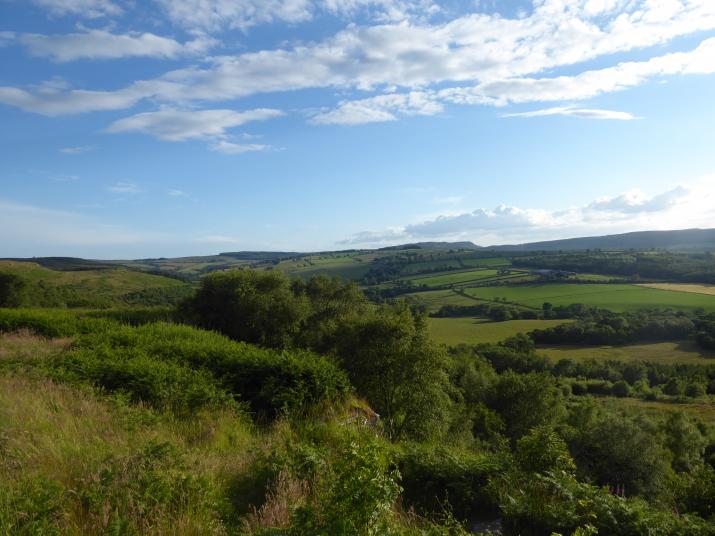
Our roundup of recent research for this issue focuses on landscape strategy, from good governance for multifunction landscapes to decisions about where best to plant trees, and to what end.
In a paper published in Nature Sustainability, Neyret et al. 2023 combined ecological data on ecosystem services with social data prioritising those ecosystem services across multiple stakeholder groups. For their study landscapes (in rural Germany) they found that increases in multifunctionality and equity can be achieved through expanding and diversifying forests and de-intensifying grasslands. Land use was already close to optimal for both multifunctionality and equity, which they credit to good governance – mainly high priority for conservation, support for diverse local economies, and effective mediation between interests.
Meanwhile, Hughes et al. 2023 conducted a space-for-time study on the Isle of Wight which used LiDAR and linear models to test for differences between sites with adjacent older woodland, and those without. Canopy height in new woodlands next to old woodlands was found to be higher by an average of nearly 2 m, and foliage height diversity was found to be on average 4.7% higher. Young adjacent woodlands grew the most on average. Creating woodlands adjacent to existing older woodlands reduces the time taken to create tall and to a lesser extent structurally diverse habitat, which may lead to early biodiversity benefits.
Finally, Image et al. 2023 modelled the impact of different farmland tree-planting scenarios on bumblebees. One of their main conclusions was that tree-planting strategy should increase emphasis on hedgerow and agroforestry for wild bee abundance and pollination service outcomes rather than big woodland blocks. Hedgerow creation provided the most consistent increase in crop pollination services. Lead author and IALE UK committee member notes that the second Environmental Improvement Plan (EIP23) has shifted its tree-planting focus from woodland to woodland + tree canopy cover which suggests Defra is also taking this on board.